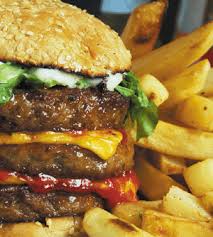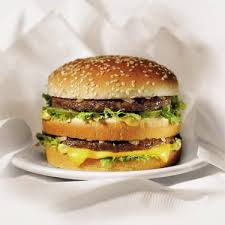What is the most expensive crab
What is the most expensive crab
eva mendes sexy

Wednesday, March 30, 2011
Monday, March 28, 2011
The fast-food industry’s $4.2 billion marketing blitz
The fast-food industry’s $4.2 billion marketing blitz
The fast-food industry’s $4.2 billion marketing blitz
The fast-food industry’s $4.2 billion marketing blitz
The fast-food industry’s $4.2 billion marketing blitz
by Tom Philpott

Last week, I praised fast food, which has probably been around as long as people have lived in cities.
But there's a particular type of fast food that goes back just a half-century, dating to the post-war rise of car-centered cities and suburbs. It relies on regimentation, weird additives, flavor "engineering," super-cheap (but highly subsidized) ingredients, and super-expensive marketing. I won't bore you with why I think this type of fast food sucks; wouldn't want to be labeled a food snob!



Unfortunately, I don't have much good news here, either. Currently, we spend about $11 billion annually on school lunches -- of which two-thirds goes to overhead and labor costs. That leaves about $4 billion to spend on ingredients -- roughly equal to the fast food industry's marketing annual budget. Per child, schools have about 90 cents per day to spend on ingredients.

The fast-food industry’s $4.2 billion marketing blitz
The fast-food industry’s $4.2 billion marketing blitz
The fast-food industry’s $4.2 billion marketing blitz
by Tom Philpott
Last week, I praised fast food, which has probably been around as long as people have lived in cities.
But there's a particular type of fast food that goes back just a half-century, dating to the post-war rise of car-centered cities and suburbs. It relies on regimentation, weird additives, flavor "engineering," super-cheap (but highly subsidized) ingredients, and super-expensive marketing. I won't bore you with why I think this type of fast food sucks; wouldn't want to be labeled a food snob!
But let's talk about that marketing. Yale's Rudd Center for Food Policy and Obesity has just put out an extraordinary report [PDF] on fast-food industry marketing.
Here's the report's headline number: $4.2 billion, which is how much the industry spent marketing its wares in 2010.To put that amount in perspective, consider the Center for Nutrition Policy and Promotion, the USDA's sub-agency that "works to improve the health and well-being of Americans by developing and promoting dietary guidance that links scientific research to the nutrition needs of consumers." Its annual budget? $6.5 million, according to The New York Times reporter Michael Moss.
So $4.2 billion vs. $6.5 million. That means that for every $1 the industry spends haranguing Americans to eat stuff like Burger King's 2,500-calorie Pizza Burger, about a tenth of a penny gets spent urging folks to eat their spinach.
And of course, as Moss' superb recent piece shows, the USDA also openly collaborates with the industry to cajole people to eat more corporate fast food.
A $4.2 billion marketing budget in 2009, a year characterized by a brutal economic slump, is the sign of an extremely profitable industry. Corporate fast food is what is known as a "countercyclical" industry -- it tends to thrive when the economy goes to hell. When money is tight, McDonald's dollar menu looks like a bargain -- and stuff like Domino's now-infamous eight-cheese Wisconsin Pizza seems like a reasonable indulgence.
How well are these companies doing? The stock market gives us a clue. Over the past two years, shares of Yum! Brands (owner of owner of KFC, Pizza Hut, Taco Bell, and Long John Silver's) and McDonald's have both more than doubled. Meanwhile, the overall stock market, as measured by the S&P 500 index of the nation's largest publicly traded companies, has flat-lined. In other words, investors are quite bullish on junk food corporations.
When times are flush, the industry is using its $4.2 billion marketing stash largely to cultivate new generations of customers: i.e., kids. The Rudd report doesn't estimate how much of the fast-food industry's marketing budget is directed at children (a 2006 study estimated a tidy $1.6 billion), but it offers a dizzying array of data to demonstrate the industry's devotion to this dubious cause. Get this
What to make of all of this? To me, it underscores the importance of the National School Lunch Program. School lunches are our society's most concrete, tangible way of transmitting foodways to rising generations. The public-school cafeteria is where we create a public vision of what the food system should be. In short, it's the public contribution to the formation of kids' eating habits. And it is in the cafeteria, I think, where the fast-food industry's marketing efforts could be effectively rebuffed.Unfortunately, I don't have much good news here, either. Currently, we spend about $11 billion annually on school lunches -- of which two-thirds goes to overhead and labor costs. That leaves about $4 billion to spend on ingredients -- roughly equal to the fast food industry's marketing annual budget. Per child, schools have about 90 cents per day to spend on ingredients.
At those levels of funding, it's no wonder that public-school administrators are increasingly outsourcing cooking to ... the fast-food industry, which knows a thing or two about engineering low-quality ingredients into something people will crave. And guess what? The USDA is cheering them on. Listen several minutes into this boring radio clip, and you'll hear a Domino's exec babbling about how USDA officials are helping the company get its pizza into school cafeterias. And if that doesn't kill you, here's a report about a Connecticut town that has invited McDonald's PR flacks into its public schools to provide nutritional counseling.
There are school districts that are trying to teach kids other visions of what food is. Grist contributor and parent-turned-school-lunch-activist Ed Bruske is writing about the one in Boulder, Colo., right now -- and how it's struggling to balance the budget after tossing the junk food out.
Meanwhile, San Francisco is about to become the first major city to ban chains from providing toys in certain fast-food meals. The measure has aroused scorn -- what will San Francisco ban next? the Times' Freaknomics blog asked. But when cash-strapped parents and school districts are up against $4.2 billion in carefully plotted ways to get kids to beg for fast food, any public effort to fight back seems welcome
Thursday, March 24, 2011
Sharp led tv 3D fullhd review
Sharp led tv 3D fullhd review
Sharp led tv 3D fullhd review
Sharp LC-60LE935 Review
60" 3D Capable LCD/LED TV
Picture and Viewing Features
I was very impressed with the Sharp LED 3D TVs at CES 2011 on the LE935. The three Sharp Quad pixel technology 3D TVs (the LE935 being one of them) won our Editors Choice Award for Best 3D LED TV at the show. The LC-60LE935 has full array back lit local dimming (number of zones not published). The TV displayed the animated Blu Ray 3D edition of Despicable Me and we were obviously impressed by the picture. There was hardly any flicker. This was one of the best 3D TV images we saw on a non-Plasma 3D TV. Colors were vibrant and I didnt notice any blur in the bottom right or left edges of the picture. The test was a true one with active shutter glasses on the face (not a stationary stand). The hurdle the Sharp 3D TVs could not conquer was the overwelming distraction when a bright light flashes across a dark background. Bright lights in the foreground on 3D TVs are not becoming to the technology. The second flaw is with 3D viewing is fast motion – which blurs the image.
Appearance
Internet Applications and Connectivity
The LC-60LE935 includes built in Wifi for access to Sharp's Internet TV suite which includes Pandora, Twitter, Flickr, Vudu, Netflix, Cinema Now as well as Sharp AQUOS Advantage Live which is an remote online live service offered by Sharp to help you personalize your settings for Internet the way you want them. Sharp is the only manufacturer with such a service.
Standout Features
At CES 2011 Sharp (LE935 series) had on display a live 2D to 3D conversion set up with a model dressed in yellow throwing a ball or opening and closing an umbrella. The 2D to 3D conversion displayed on the LE935 was the best I saw at the show. The picture was good compared to most other 2D to 3D conversion displays which I would describe as pretty lousy. The conversion technology though, even from the LE935 is unconvincing. In my opinion, you're better off not converting 2D content to 3D than watching a lousy 3D picture image. The only function I can see this being useful for is still images.
Full Array Local Dimming from true back lit LED backlighting. This is top of the line technology for LED TVs and will necessarily cause the price to be reflective of the advanced technology. The true LED backlighting allows for more detailed placement of local dimming, thus manipulating this backlight can create a better 3D picture and reduce the flicker present from edge lighting. The 60LE935 has the best 3D picture and the best picture quality overall among the Sharp LED TVs.
240Hz. The 240Hz feature in the Sharp LED TVs is not as over-hyped in eliminating natural background blur as are some of the other competitors. This is a positive thing, as it leaves the picture looking more natural while eliminating much of the judder and jerky effects that are a problem on LED TVs.
from - http://reviews.lcdtvbuyingguide.com/sharp-lcd-tv/sharp-lc60le935.html
Monday, March 21, 2011
what is expensive food in china
what is expensive food in china
what is expensive food in china
McDonald’s announced it has raised its prices in all 1,000 of its Chinese restaurants due to the high food inflation. The price hike only pertains to mainland China and does not affect any of its other Asian franchise restaurants.

The Chinese Consumer Price Index rose 4.4% in October, the highest monthly rise in more than two years.
The rise in CPI is primarily due to the high cost of raw food commodities and may spurn China to place a cap on commodity prices.
Wen Jiabao, Chinese Premier, said that his cabinet is drafting legislation to curb the excessive price increases.

China may also impose limits and tougher penalties on agricultural futures speculators that drive up the prices of raw materials artificially.
The plans have drawn criticism in China as well as abroad. Some economists have called the measures unnecessary and point out that China has sufficient tools to control rising food prices without having to resort to the drastic measures of capping futures and food prices.
China is expected to raise its benchmark rate this coming Friday by another 25 Bp to battle inflation.
The Consumer Confidence Index in China shows that 76% of the Chinese expect prices to rise over the next year, according to the Chinese statistics bureau.

India’s fast growing economy is not immune to the rise in food prices either. Dairy products alone rose by 21% in 2010 while other non-dairy food prices saw a jump of 14% year-over-year.
While Ben Bernanke may point out that inflationary pressure in the US remains below expectations that may not be the case for much longer. US food producers have hinted on several occasions that a rise in food prices should be expected to pass on the higher production costs to the consumer in order to keep their profit margins healthy.
Inflation seems to rise across the global economy and one local or continental economy cannot consider itself to be immune.
The inflationary wave will move from the East to the West at a rapid pace and unless our monetary policies are adequate we should brace ourselves for the realistic possibility that a Chinese or Indian ripple will become a tsunami when the effect reaches the US.
The US however faces a more crippling effect to battle the food war and that is high unemployment and low spendable income.

One can always opt to eat at McDonald’s in Beijing where a Big Mac meal will only set you back $2.20 versus one in the US where the average price stands at $3.70.
Written by Nick Doms © 2010, all rights reserved
what is expensive food in china
McDonald’s announced it has raised its prices in all 1,000 of its Chinese restaurants due to the high food inflation. The price hike only pertains to mainland China and does not affect any of its other Asian franchise restaurants.
The Chinese Consumer Price Index rose 4.4% in October, the highest monthly rise in more than two years.
The rise in CPI is primarily due to the high cost of raw food commodities and may spurn China to place a cap on commodity prices.
Wen Jiabao, Chinese Premier, said that his cabinet is drafting legislation to curb the excessive price increases.
China may also impose limits and tougher penalties on agricultural futures speculators that drive up the prices of raw materials artificially.
The plans have drawn criticism in China as well as abroad. Some economists have called the measures unnecessary and point out that China has sufficient tools to control rising food prices without having to resort to the drastic measures of capping futures and food prices.
China is expected to raise its benchmark rate this coming Friday by another 25 Bp to battle inflation.
The Consumer Confidence Index in China shows that 76% of the Chinese expect prices to rise over the next year, according to the Chinese statistics bureau.
India’s fast growing economy is not immune to the rise in food prices either. Dairy products alone rose by 21% in 2010 while other non-dairy food prices saw a jump of 14% year-over-year.
While Ben Bernanke may point out that inflationary pressure in the US remains below expectations that may not be the case for much longer. US food producers have hinted on several occasions that a rise in food prices should be expected to pass on the higher production costs to the consumer in order to keep their profit margins healthy.
Inflation seems to rise across the global economy and one local or continental economy cannot consider itself to be immune.
The inflationary wave will move from the East to the West at a rapid pace and unless our monetary policies are adequate we should brace ourselves for the realistic possibility that a Chinese or Indian ripple will become a tsunami when the effect reaches the US.
The US however faces a more crippling effect to battle the food war and that is high unemployment and low spendable income.
One can always opt to eat at McDonald’s in Beijing where a Big Mac meal will only set you back $2.20 versus one in the US where the average price stands at $3.70.
Written by Nick Doms © 2010, all rights reserved
Subscribe to:
Comments (Atom)